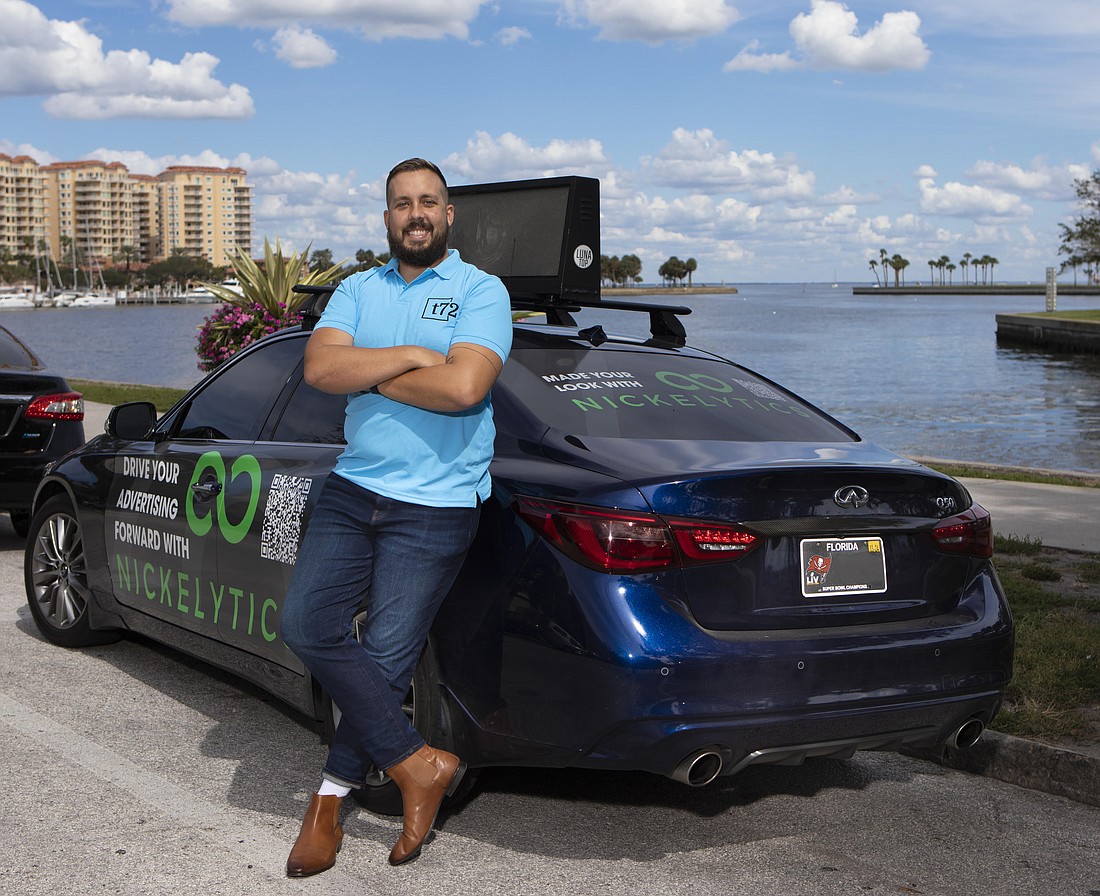- April 9, 2025
-
-
Loading

St. Pete businessman Judah Longgrear was not truly going out of business when he closed his ride-hailing business in 2019. Instead, he was shifting toward another form of advertising on wheels.
His old business model was known as Nickel Rides, and it provided free rides within various areas in St. Pete, Fort Myers, Punta Gorda, Naples and Cape Coral. The free rides were paid for by advertisers, but Longgrear paid for the small vehicles and had to manage the drivers.
From its founding in 2017 — with $1 million in capital invested over time — through its peak, the company had 30 employees. But in 2019, he had to lay people off, get rid of his mobile assets and deal with the media claiming he was going bust. Only four people were left in his company.
That's when he realized his old model was "asset heavy" and not sustainable, he says. It was time for what he termed a "hard pivot."
"That was tough. … In a lot of ways, it was a failure," says Longgrear, a West Virginia University graduate in his "early 30s."
Yet Longgrear already had a new business model in mind, something advertising-related that went off like a light bulb in his head. He had a platform that measured the data of the "nickel" rides. That data seemed valuable. But what to do with it?
"The idea actually came one morning doing market research on how little Uber and Lyft drivers were making," says Longgrear. "I thought about launching it as a side project first, but ended up pivoting the whole business after further market validation and research."
Now he would have the drivers come to him, like DoorDash and Uber, with their own vehicles. He would then put the advertising on their cars and charge companies for the service. The drivers would then get a stream of revenue from the transaction.
Longgrear would also provide companies with the data culled from the vehicle trips, so those entities could see the effectiveness of it. The company he made from this idea is called Nickelytics.
On Nickelytics' website, Longgrear posted a case study on AmTrust Financial Services' advertising. His company claimed 28.2 million impressions were generated, with over 225,075 miles travelled, at a cost of $2.13 per thousand impressions. (The study indicated how serious Longgrear is about throwing ads on delivery robots, because they were part of the package, the data and the miles travelled. Most of the income, however, is still on the automobile-wrap side.)
Despite COVID-19, his new model continued on. Longgrear further developed a dashboard and platform, which seems to be one of the most important parts of his business, because much like Uber, it starts with data.
"We saw the real opportunity in the software," says Longgrear, of Nickel Rides' data handling.
Now Nickelytics has 20 employees, including contractors, with "inventory," or ad-wrapped vehicles, in every state. The company has done campaigns in over 40 cities, Longgrear says. And while Longgrear declined to give revenues for 2021 and 2022, he notes the company surpassed $1 million annual recurring revenue "a while ago."
Recently, he adds, the company closed a deal for "well over six figures" for 200 wraps on automobiles.
His company also recently caught the attention of Dallas-based T-72 Club Inc., which acquired Nickelytics in August for "north of seven figures," according to Longgrear. T72 officials say its firm has more than $5 billion in investments and more than 150 acquisitions.
Nickelytics now plans to add a new option to its array of advertising: "rooftoppers."
Rooftoopers are familiar sights if one has ever been to New York City and seen taxicabs with such advertising on the cars' rooftops. But Nickelytics' rooftops will be digital, not analog posters.
The rooftoppers are already being tested. The plan is to first to use them in Tampa, then more in Florida, and then Texas.
"It will really come down to how the pilot goes," says Longgrear.
As for Longgrear, he was never really a technical or IT person. His employees include some people in other nations, and he has utilized the far-flung team to grow his digital ad empire. "The beauty of a building a team, right?" says Longgrear. "It takes a village. We've had a lot of contributors."
But just how Longgrear gained such management skills and work ethics came not from WVU, but from a coffee shop. A failing coffee shop in an office building.
Longgrear was a 19-year-old undergraduate who bought the shop, but he didn't understand why the coffee shop in a medical building, with nearby nurses and doctors, was failing. The coffee in the cafeteria was not nearly as good as his brands, Longgrear says.
So Longgrear did what a marketer does: He sent surveys to nurses and doctors. They told him despite the proximity, they didn't have time to move to different floors in the building to get coffee.
The solution was wheels and feet: Longgrear then added delivery services to the coffee shop, and the nurses and doctors started buying. Not bad for a 19-year-old businessman.
"I've always been interested in entrepreneurship," says Longgrear.